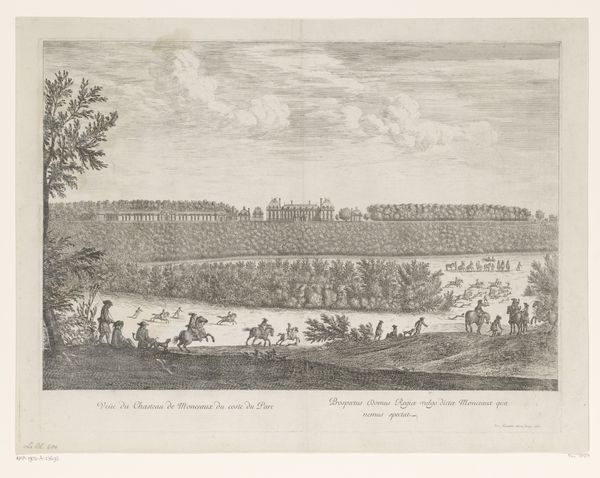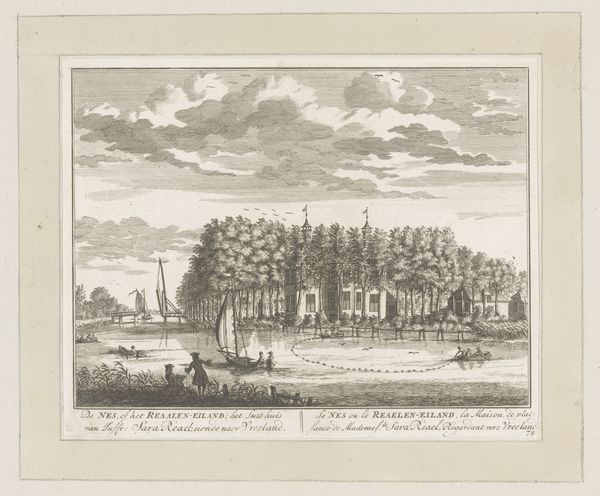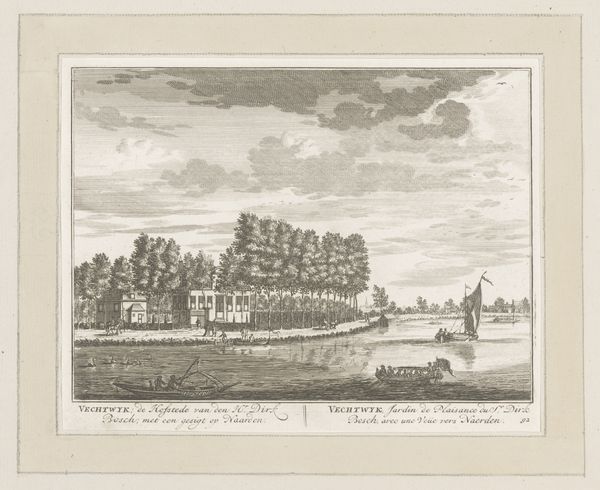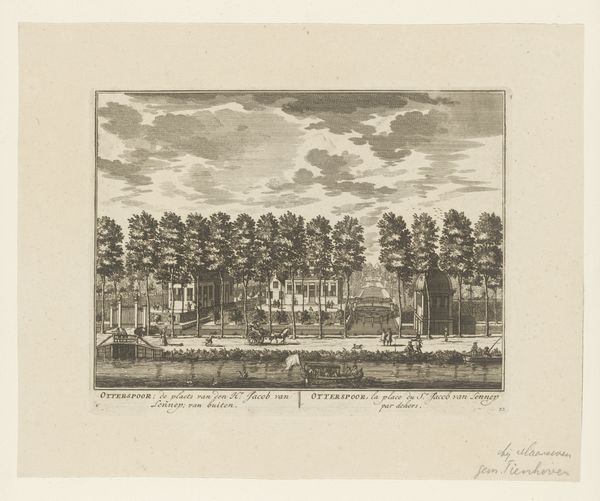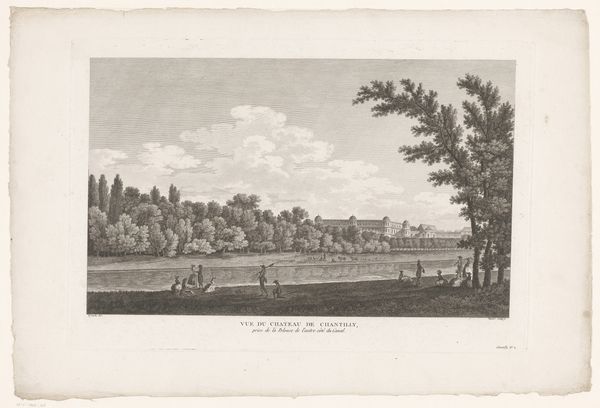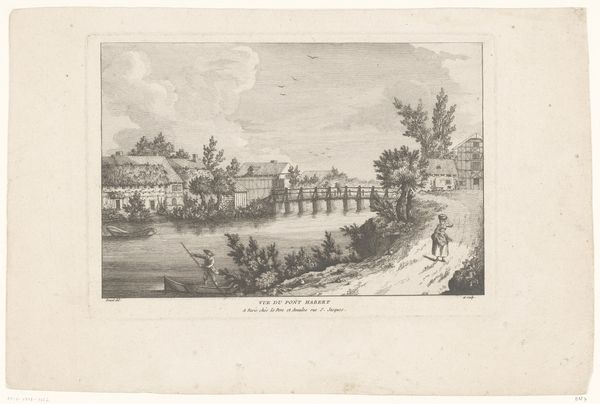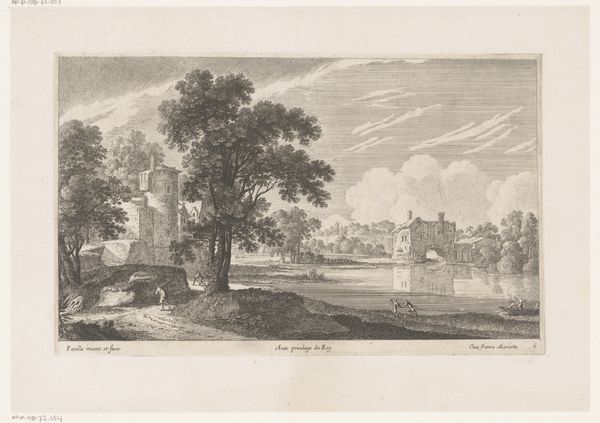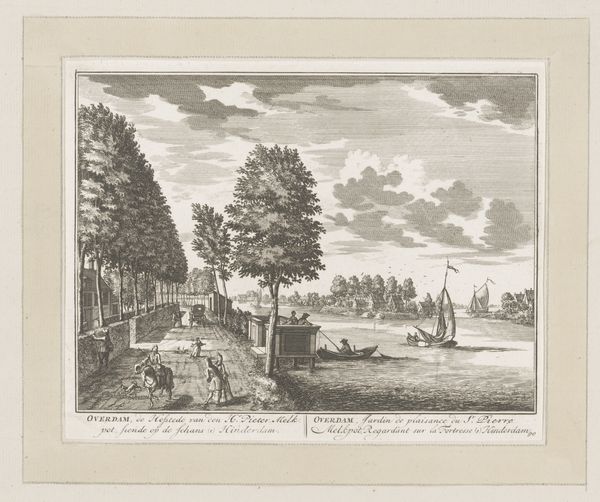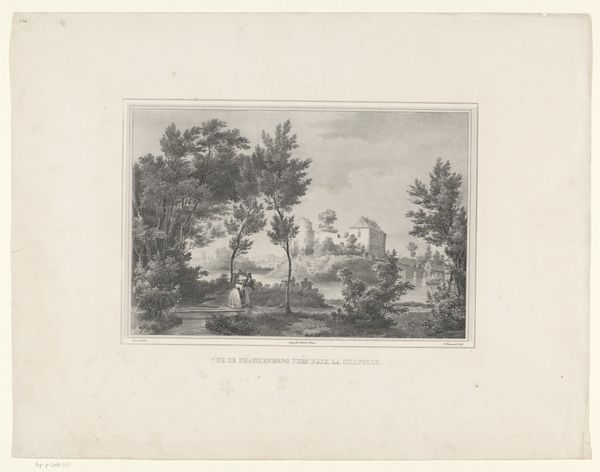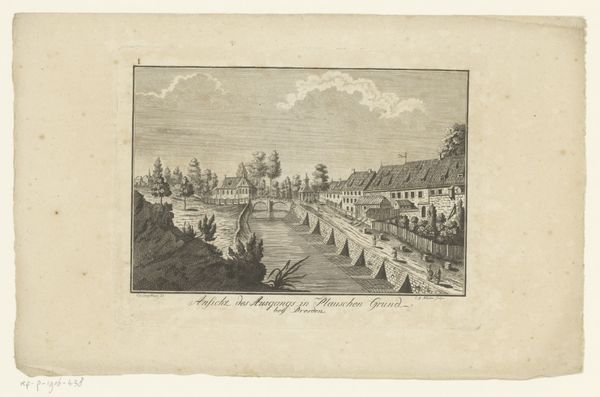
etching
#
aged paper
#
baroque
#
etching
#
old engraving style
#
landscape
#
river
#
etching
#
cityscape
Dimensions: height 158 mm, width 203 mm
Copyright: Rijks Museum: Open Domain
Curator: Immediately, what strikes me is how…still it all is. Despite the water, the suggestion of wind in the clouds, there’s a palpable quietness. It's all beautifully rendered, of course, but it feels like a memory more than a scene. Editor: That stillness reflects, I think, the social positioning embedded within landscapes of this period. We’re looking at Daniël Stopendaal’s "Buitenplaats de Sterreschans aan de Vecht," an etching from 1719. The precision suggests control—not only of the artistic medium, but of the land itself, visualized as property and status. Curator: "Control" is a good word for it. The Vecht river, those almost perfectly uniform trees... It’s as if nature is arranged like furniture. And that stark white building nestled in the center, it’s so self-assured! Like it owns everything we see here. Editor: Indeed. Think about the function of these buitenplaatsen—country estates. They were retreats for the elite, far from the stench and potential uprisings of urban centers. This image reinforces that power dynamic. It presents an idyllic, almost fantasized version of reality where the labour that produced this wealth is conveniently invisible. Curator: It’s interesting that you mention the fantasy aspect, because while I see the carefully ordered landscape, I can also detect a whisper of vulnerability. Notice how much space the sky occupies, almost pressing down on the scene below. Those clouds are hardly idyllic! There's an almost ominous weight above this little world of leisure. Editor: The Baroque era certainly had its contradictions. The focus on luxury and beauty existed alongside profound social inequalities and anxieties about power. Even these meticulously planned estates couldn’t entirely escape the unease of the time. Stopendaal's choice to foreground nature hints to a form of nostalgia that may not always represent lived experience. Curator: So it becomes a symbol not just of status, but perhaps of a longing for something…less constructed? A connection with nature that feels increasingly artificial. Editor: Precisely. Art becomes a mirror reflecting societal structures, desires, and even the unspoken fears that lurk beneath the surface of even the most beautiful landscapes. Curator: It's amazing how a simple etching can unlock so much. Suddenly this still little world starts humming with stories. Editor: It reminds us that every artistic depiction is a strategic visual argument, deliberately curated to convey a very particular point of view.
Comments
No comments
Be the first to comment and join the conversation on the ultimate creative platform.
